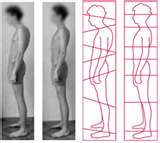
Structural Integration
What is Structural Integration?
The Rolf Method of Structural Integration was named after its creator Ida Rolf, PhD, and first gained recognition in the 1960's under the name “Rolfing” (Rolf 1989).
Structural Integration is a method of deep tissue and myofascial release bodywork. It works to free up constrictions in the muscle and myofascial system which results in greater flexibility and ease of movement for the body.
Rolf believed that imbalances in the body alignment change our relationship to gravity and hence, our posture and consequent movement patterns. Misalignment causes connective tissue fascia to tighten and muscles to shorten, resulting in pain, discomfort, and mobility problems. Postural aberrations cause increased wear and tear on the body, pain, and physical restrictions in movement and flexibility.
Additionally, injury and other situations that create imbalance in the body result in the body’s attempt to compensation through further postural changes. These changes may sacrifice one area of the body to support others that are not functioning as well, such as favoring the injuring body part. Postural compensations that further strain the body, are maintained and possibly even amplified over time and may create patterns of movement that further limit the health of the body.
How does Structural Integration Work?
Myofascia (fascia) is the soft tissue component of the connective tissue that provides support and protection for most structures within the body, including muscle, ligaments, and other tissues. The myofacial covering of the muscles is innervated with blood flow, nerves, and contractile tissue. Constriction of the myofacial system can result in sustained muscular contractions (shortening of the muscles), lessening of blood flow, reduced movement, and chronic musculoskeletal pain.
Fascia is further thought to store memory of injuries and trauma (physical and emotional). Structural Integration mechanically and energetically releases these holding patterns and restores the tissue to greater wellness and health. It is used to treat somatic dysfunction and pain, as well as restrictions of motion. This is accomplished by lengthening and relaxing contracted muscles, increasing circulation, increasing venous and lymphatic drainage, and stimulating the stretch reflex of muscles and the fascia that covers it.
By softening the myofascial tissue that covers the muscle system, Structural Integration results in muscles and tissues being realigned properly, allowing the force of gravity to flow through the natural vertical and horizontal planes of the body. Through a series of 10 bodywork sessions, Structural Integration works to realign all the major body segments to restore proper vertical alignment. The aim of Structural Integration is to bring the whole body into alignment thus relieving the cause of the physical (and often also psychological mind-sets that accompany postural) symptoms. By softening the fascia, the body is freed from restrictions and can return to its natural relationship with gravity.
Releasing the fascia also has the impact of improving the flow of blood, lymph, and neural activity so that the muscles become healthier, more adequately nourished and hydrated, and the normal immune processes can remove wastes that build up and become toxic to the tissues. This results in relief of pain, improved health, and greater mobility.How does Structural Integration help chronic pain conditions?
Injury or irritation of fascia or muscle causes local inflammation. Chronic inflammation results in thickening or scarring of the connective tissue, causing pain and constriction, resulting in reflexive muscle tension that perpetuates more inflammation. In this way, a pain-inflammation cycle can create a feedback loop and ultimately reduce blood flow. This cycle creates body dysfunction even in the absence of the original offending agent or ongoing injury. Myofascial release techniques focus on breaking this cycle and restoring proper physiological processes to the body, thereby reducing pain of chronic conditions.
What are the benefits of Structural Integration?
Structural Integration can help you recover your bodily health and improve toward your life goals. It restores balance, comfort, and openness to the body. Our capacity to respond to any situation with greater harmony and flexibility is enhanced when our body is free of pain, properly aligned, and moving with ease.
Research has shown that, long after the 10 session series of Structural Integration is completed, the body maintains the gains that have been made. This is because the patterns of movement that have created pain and discomfort or reduced mobility are corrected or vastly improved so future stresses on the body are weathered better.
Common results of the 10 basic sessions include improved breathing, reduction in or alleviation of pain, better balance, more fluid movement, greater sense of lightness, increased energy, and improved breathing, to name a few. Psychological benefits are also likely, including greater self confidence, reduction in anxiety or depression (often associated with pain), and other improvement in sense of self.
How many sessions are required? The Basic Series
Structural Integration is a ten-session deep tissue body-work process that focuses on the myofascial system of the whole body. Each session lasts about an hour and can be scheduled weekly or as desired by the needs of the client. "Spot-work" or single-focus sessions to work on a specific problem may also be possible, depending on the presenting problem.
For More Information:
http://www.rolfguild.org/aboutsi.html
* Rolfing, and Rolfer are registered trademarks of the Rolf Institute.
The information provided here, is in no way associated with the Rolf Institute. Brad W. Paulson has completed the training offered through the Guild for Structural Integration.
